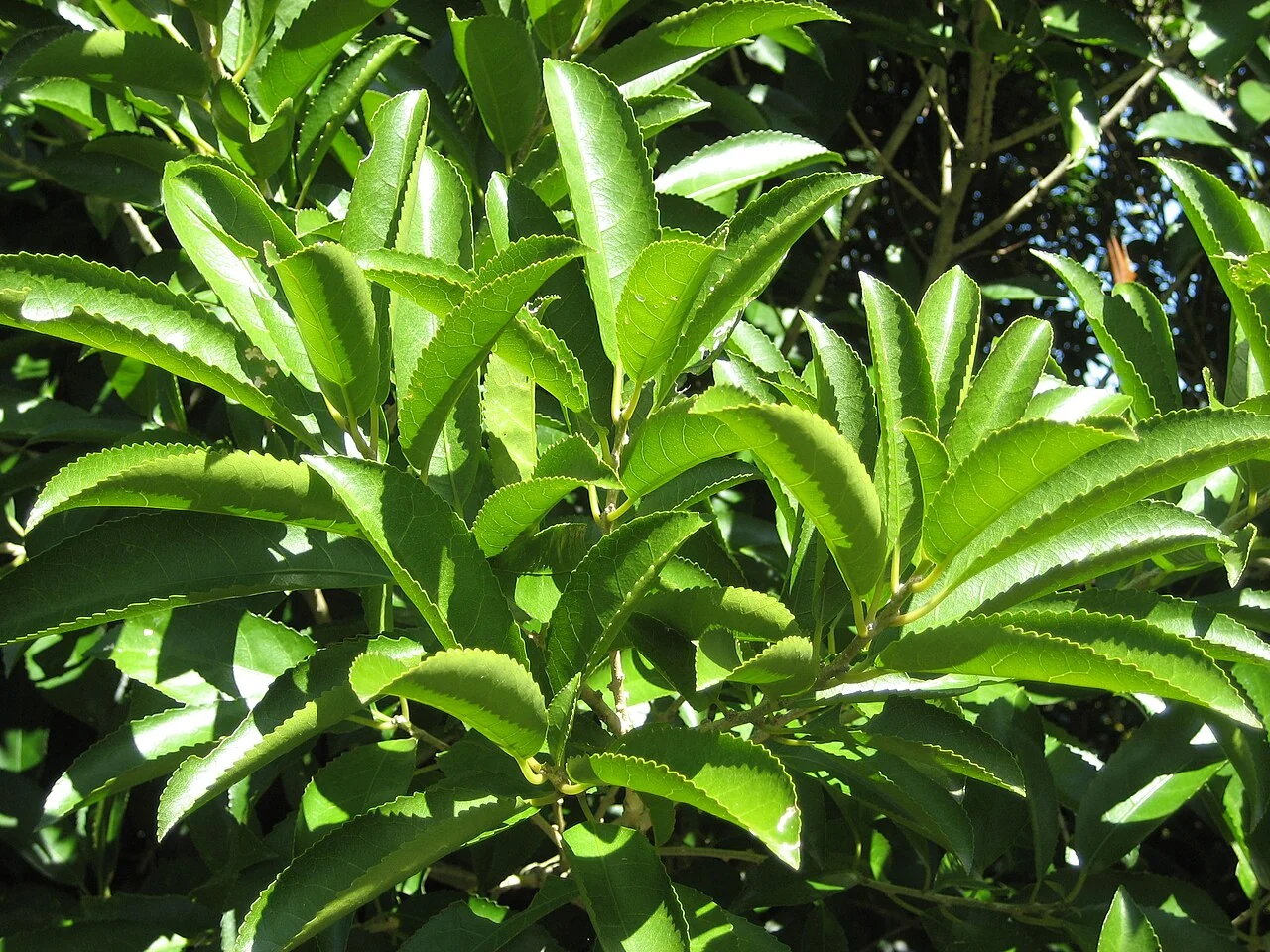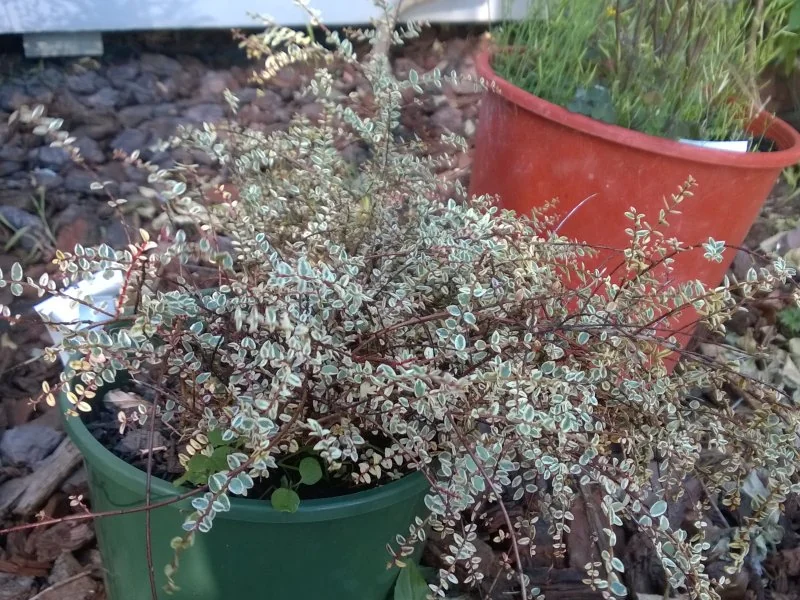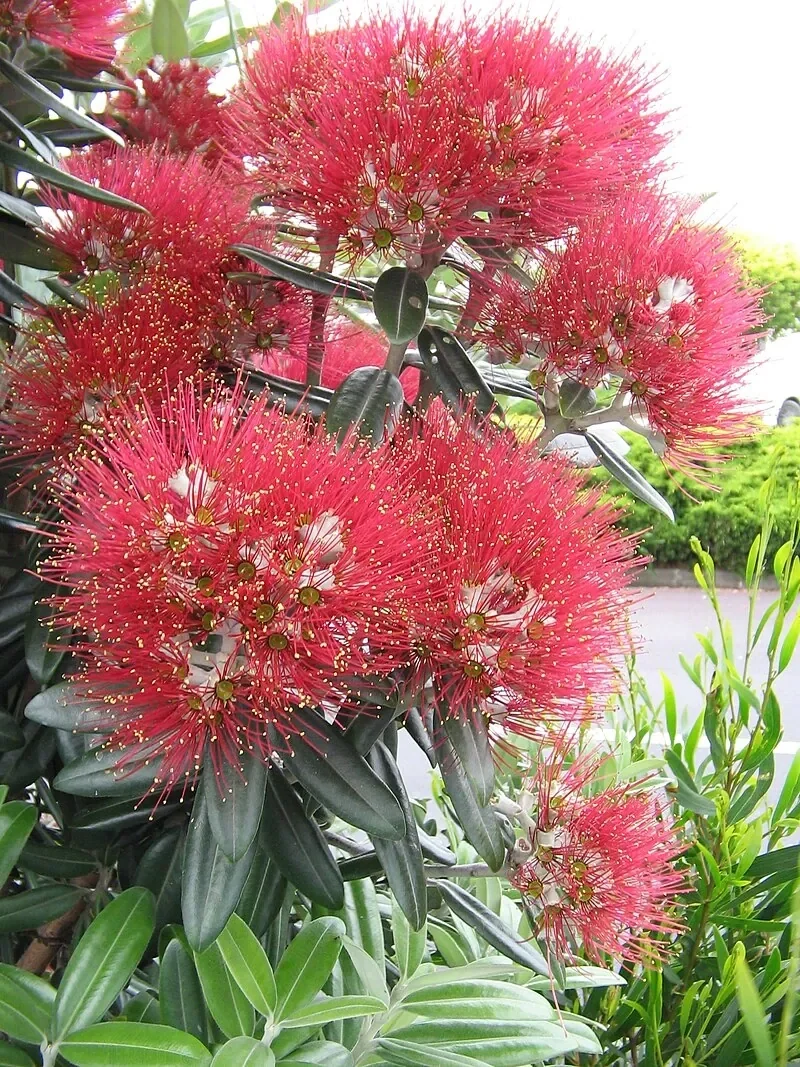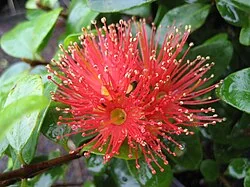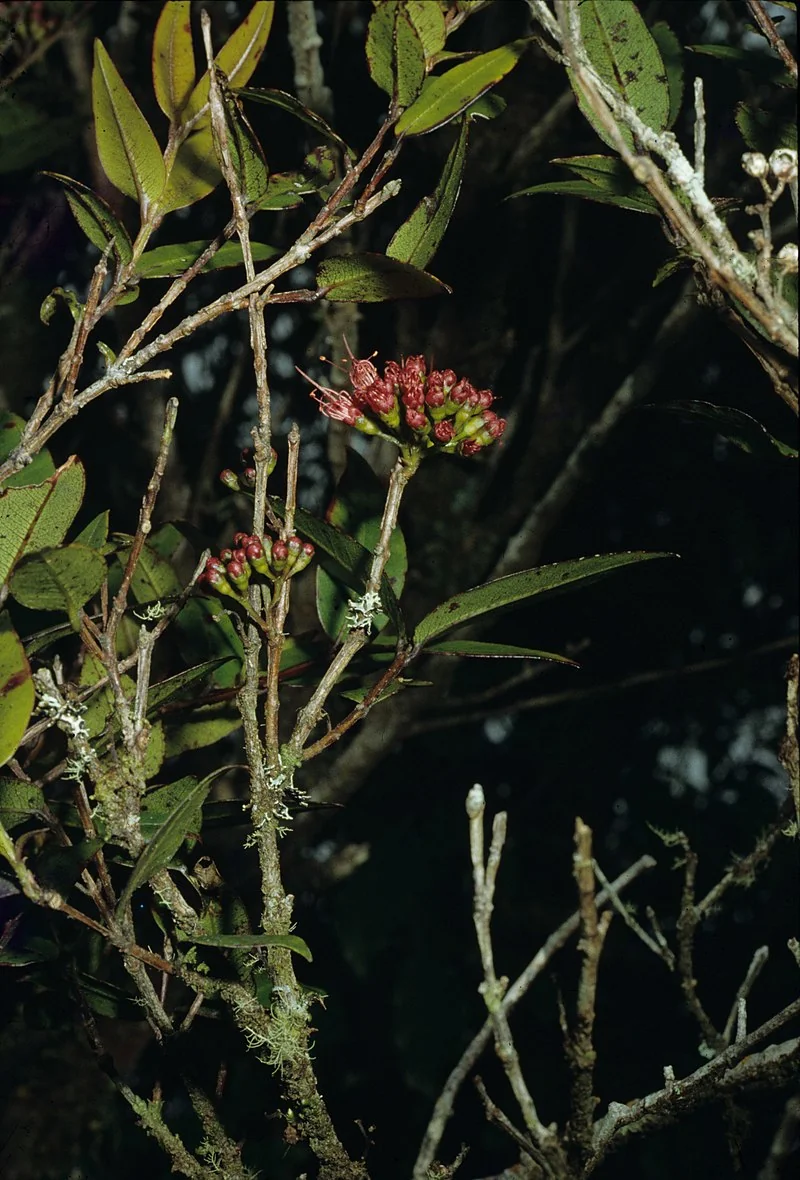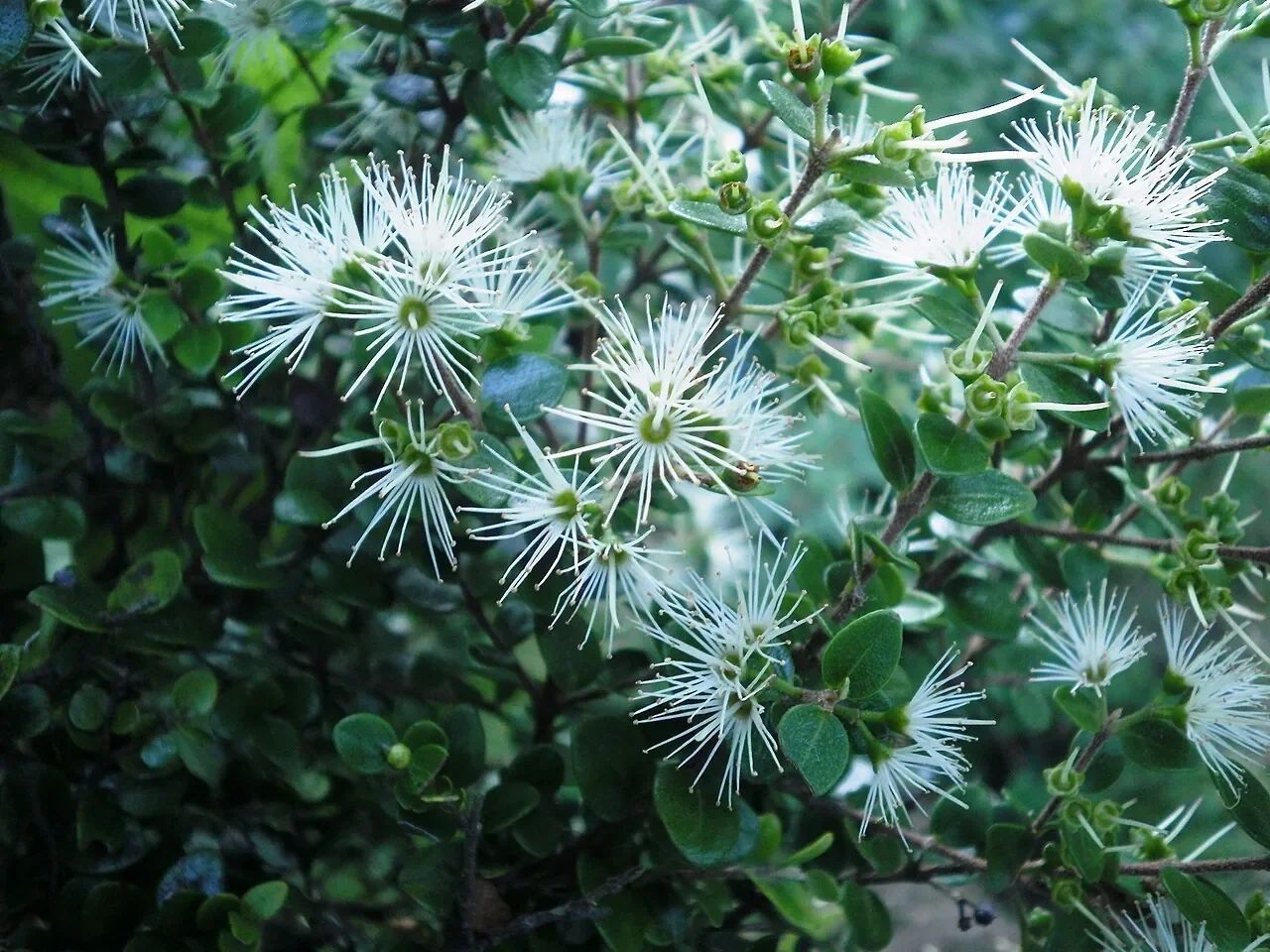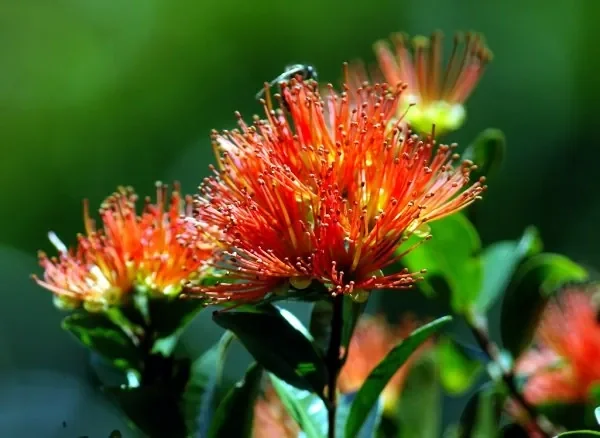
Manakura
Melicytus micranthus
This native plant, known as Manakura (scientific name: Melicytus micranthus), is a remarkable species endemic to New Zealand. It is characterized by its unique features, ecological role, and cultural significance. This comprehensive guide provides detailed information on its care, propagation, and importance within the New Zealand ecosystem. Understanding this plant contributes to the appreciation of our rich biodiversity and heritage. native trees

Plant Description
Botanical Features
Manakura (Melicytus micranthus), also known as Swamp Mahoe or small-leaved Mahoe, is a native New Zealand shrub that can also grow into a small tree, typically up to 2 meters tall. It is characterized by its stiff, often interlaced, zig-zagging branches. The leaves are small, ranging from 1.5-2.5 cm long and 1-2 cm wide, and can be elliptic to obovate-oblong or broad-ovate, with wavy or scalloped margins. A distinctive feature is the pale blotch at the base of the green leaves, with the vein network more visible on the underside. It produces minute, axillary flowers, typically white, from October to April. These are followed by small, dark purple berries that are 3-4 mm in diameter, containing 1-4 seeds. It is found in lowland forests, scrub, and forest margins, particularly in drier sites and on alluvial ground, and thrives in damp or swampy areas.
Quick Facts
| Scientific Name | Melicytus micranthus |
|---|---|
| Height | 15-20 m |
| Spread | 3-5 m |
| Water Needs | Moderate |
| Light | Full sun to part shade |
| Frost Tolerance | Moderate |
| Salt Tolerance | Moderate |
| Growth Rate | Medium |
| Lifespan | Long |
Climate Best Suited to
Manakura (Melicytus micranthus) is primarily found in lowland to hilly forests across the North Island of New Zealand, extending to the Marlborough Sounds in the South Island. It demonstrates good adaptability to various conditions, thriving in areas with well-drained soils and tolerating both full sun and partial shade. Its natural distribution suggests a preference for warmer, more humid environments but with a reasonable tolerance for cooler temperatures found in its southern range.
Regional Suitability
| City | Climate Suitability |
|---|---|
| Whangārei | Ideal |
| Auckland | Ideal |
| Hamilton | Ideal |
| Tauranga | Ideal |
| Rotorua | Ideal |
| Gisborne | Ideal |
| New Plymouth | Ideal |
| Napier | Ideal |
| Whanganui | Ideal |
| Palmerston North | Ideal |
| Wellington | Ideal |
| Nelson | Ideal |
| Christchurch | Ideal |
| Dunedin | Moderate |
| Invercargill | Moderate |
Natural Habitat
Manakura is a hardy and adaptable shrub found in a variety of habitats throughout New Zealand. It is most common in lowland forests, scrubland, and on the margins of forests. It has a preference for drier sites and is often found on alluvial terraces and well-drained slopes. While it can tolerate a range of conditions, it is typically found in areas with some shelter from harsh winds and extreme frost.
Plant Conservation
Melicytus micranthus, also known as swamp Māhoe or manakura, is a native New Zealand plant generally considered "Not Threatened" in terms of its conservation status. This classification has been consistent in assessments from 2004 through 2023. Melicytus micranthus is an endemic species to New Zealand, found across both the North and South Islands. It is characterized by its zig-zagging, interlacing branches, small wavy-edged green leaves, tiny white flowers, and dark purple fruit. The plant typically grows in lowland forests, scrub, and forest margins, favoring damp or swampy areas, as well as drier sites and alluvial ground.
Growing Requirements
Soil Requirements
Manakura (Melicytus micranthus) is remarkably adaptable to different soil conditions, thriving in well-drained environments. It can tolerate a variety of soil types, from sandy to loamy, and prefers a neutral to slightly acidic pH. Good drainage is crucial to prevent root rot, ensuring healthy growth and development.
- Tolerates a wide range of soil types from clay to sandy
- Prefers well-draining soils but can handle occasional waterlogging
- Thrives in moderately fertile soils but will grow in poor soils too
- Can tolerate slightly acidic to slightly alkaline pH
- Handles coastal conditions including salt spray
Light Requirements
Manakura (Melicytus micranthus) thrives in a variety of light conditions, from full sun to partial shade. Optimal growth and flowering are typically achieved in locations receiving ample sunlight throughout the day. However, it can also tolerate some shade, especially in hotter climates, where it benefits from protection during the most intense afternoon sun.
- Full sun for optimal growth and form
- Can tolerate partial shade but may develop a leggier form
- At least 6 hours of direct sunlight daily is ideal
- Northern or eastern exposures work well in garden settings
Water Requirements
Once established, Manakura (Melicytus micranthus) is remarkably drought-tolerant, requiring minimal supplemental watering. During its establishment phase, consistent moisture is crucial to encourage strong root development. Mature plants can withstand dry periods, but regular watering during prolonged droughts will promote healthier growth and more abundant flowering.
- Moderate watering during establishment (first 1-2 years)
- Drought-tolerant once established
- Can handle periods of soil saturation
- Reduce watering in winter when growth slows
- Signs of overwatering include yellowing leaves and crown rot
Planting Guide
Preferred Growing Conditions
- Sunlight: Melicytus micranthus prefers full sun to partial shade, thriving best with 6-8 hours of daily light exposure. It can tolerate partial shade and is suitable for shaded outdoor environments, but direct, harsh sunlight should be avoided to prevent leaf burn.
- Soil: It thrives in moist, fertile, and well-drained soils. It naturally grows in damp or swampy areas and tolerates seasonal flooding, making it ideal for wetlands and low-lying gardens. The plant can also tolerate heavy and loamy soils.
- Moisture: This species requires consistently moist soil but is also noted for its drought tolerance once established, adapting to less frequent hydration. Ideally, water every 2-3 weeks, allowing the soil to partially dry out between waterings.
- Hardiness: Melicytus micranthus is hardy and tolerant of frost, shade, and wind. It is suited for all regions of New Zealand.
Planting Instructions
- Soil Preparation: Amend the soil with organic matter to improve fertility and moisture retention.
- Digging the Hole: Dig a hole that is twice as wide as the root ball and to the same depth.
- Placement: Position the plant in the hole, ensuring the base of the plant is level with the surrounding soil.
- Backfilling: Backfill the hole with soil, gently firming it around the root ball.
- Watering: Water thoroughly after planting to help settle the soil and establish the plant.
- Mulching: Apply mulch around the base of the plant to help conserve soil moisture.
Ecological Role
Melicytus micranthus is a fine-textured understorey shrub that binds soils, feeds wildlife, and maintains shaded microclimates beneath taller canopy species.
Trophic Links
- Bird food: Small, often copious fruits are taken by native birds which disperse seeds along forest margins and waterways.
- Insect resource: Inconspicuous flowers provide pollen/nectar for small insects, supporting diverse invertebrate assemblages.
Habitat Functions
- Understorey shelter: Dense branching protects seedlings and ferns from wind and surface drying, improving recruitment conditions.
- Soil stability: Roots knit together banks and track edges, reducing erosion in disturbed bush.
Resilience
- Stress tolerance: Withstands partial shade and episodic dry spells, providing year-round structure.
- Herbivory: Seedlings may be browsed; protection improves establishment in grazed areas.
Through steady fruiting and durable cover, M. micranthus strengthens forest floor function and connectivity.
Uses and Significance
Garden Uses
- Specimen tree for visual impact
- Suitable for native gardens and restoration projects
- Enhances native garden aesthetics and biodiversity
- Provides architectural accent with its unique structure
- Effective for erosion control on slopes and banks
Landscaping Ideas
Wetland and Bird-Friendly Plantings
- Riparian edges: Plant along stream margins and damp hollows to stabilise soil and provide cover.
- Shelter and screens: Interlace pruning creates dense, wind-filtering hedges in moist sites.
- Habitat value: Flowers and small berries feed insects and birds; combine with Coprosma, Carex, and Plagianthus.
- Urban rain gardens: Tolerates episodic inundation once established, provided outflow drains freely.
Prefers sun to light shade in moisture-retentive, organic soils; mulch generously to keep roots cool and moist.
Seasonal Care Calendar
Spring
In spring, Manakura (Melicytus micranthus) begins its active growth phase. New foliage emerges, and it's an ideal time for planting new specimens or propagating. Ensure adequate moisture and monitor for early signs of pests.
- New growth begins with fresh foliage development
- Apply a balanced, slow-release fertilizer if desired
- Excellent time for planting new specimens or dividing offsets
- Monitor for new pest activity and address promptly
Summer
Summer is the peak growing season for Manakura (Melicytus micranthus), often accompanied by flowering. Consistent watering is important, especially for young plants, to support vigorous growth and prevent stress during dry periods.
- Flowering typically occurs in early to mid-summer (November-January)
- Water young trees regularly during extended dry periods
- Avoid heavy pruning during the active growing season
Autumn
During autumn, Manakura (Melicytus micranthus) prepares for the cooler months. Fruits or berries develop, providing food for native birds. It's also a good time for planting and general garden cleanup.
- Fruits or berries develop and ripen (December-February), attracting birds
- Natural leaf shedding occurs as part of its growth cycle
- Good time for planting new specimens to establish before winter
- Clean up fallen leaves if a tidy appearance is desired
Winter
Winter is generally a dormant period for Manakura (Melicytus micranthus). Minimal care is required, though young plants may benefit from protection in colder regions. This is an opportune time for any necessary structural pruning.
- Generally dormant with minimal growth activity
- No special winter protection needed in most mild climates
- Suitable time for structural pruning if required
- Fallen leaves can be left as mulch or removed for tidiness
When to Prune and How Much
Manakura (Melicytus micranthus) generally requires minimal pruning to maintain its natural form and health. Pruning should focus on removing dead or damaged growth and shaping the plant as needed.
- Remove dead, damaged, or diseased branches at any time of year
- Light formative pruning when young helps establish good structure
- To create a multi-trunked specimen, cut the main stem to encourage branching
- Fallen leaves can be removed for a tidier appearance, or left as natural mulch
- If necessary, lower branches can be removed to create clearance underneath
- Major pruning is best done in late winter to early spring before new growth
Always use clean, sharp tools for pruning to minimize the risk of disease and ensure clean cuts. The plant often responds well to pruning with vigorous new growth, contributing to a fuller, healthier appearance.
How to Grow Manakura
From Seed
Propagating Manakura (Melicytus micranthus) from seed is a rewarding process, though it requires patience. Start by collecting seeds from the ripe, dark berries in autumn. Clean the flesh from the seeds before sowing. Sow the seeds in a deep seed tray filled with a well-draining seed-raising mix. Cover them lightly with about 5mm of the mix or fine gravel. Water the tray gently and place it in a warm, sheltered spot with bright, indirect sunlight. Germination can be slow, taking several months. It is crucial to maintain consistent moisture levels without waterlogging the soil. Once the seedlings are large enough to handle, carefully prick them out into individual pots. Use a deep pot to accommodate the plant's developing taproot. Grow them on for a year or two before planting them in their final position.
From Cuttings
Manakura can also be grown from semi-hardwood cuttings, which is a faster method than growing from seed and ensures the new plant is true to the parent. Take cuttings in late summer or early autumn from healthy, vigorous shoots of the current season's growth. Cuttings should be about 10-15cm long and taken from a node. Remove the leaves from the lower half of the cutting to reduce water loss and dip the base in a rooting hormone to encourage root development. Insert the cuttings into a container filled with a free-draining potting mix. Place the container in a warm, humid environment, like a propagator or under a clear plastic bag, to maintain high humidity. Keep the mix moist but not waterlogged. Roots should form within a few months. Once the cuttings have a well-developed root system, they can be potted on into larger containers and grown until they are robust enough to be planted out in the garden.
Planting
When planting your Manakura, choose a site with well-drained soil and a sunny or partially shaded aspect. While it is adaptable to a range of conditions, it thrives in a cooler, moist root run. Before planting, prepare the site by digging a hole that is twice the width of the root ball and just as deep. Gently tease out the roots of the plant to encourage them to grow outwards into the surrounding soil. Place the plant in the hole, ensuring that it is at the same depth as it was in the pot. Backfill with soil and firm it down gently. Water the plant thoroughly after planting to settle the soil and eliminate any air pockets. It is important to keep the soil moist, especially during dry periods, until the plant is well-established. Applying a layer of organic mulch around the base of the plant will help to retain moisture, suppress weeds, and provide nutrients as it breaks down.
Pests and Diseases
Moist-Site Care
- Passionvine hopper/sooty mould: Sap-feeders leave honeydew that blackens leaves; encourage airflow and wash off residues.
- Scale insects: Treat with horticultural oil during winter; prune congested branches.
- Leafrollers: Chew soft growth; light pruning removes shelters, and birds assist control.
- Waterlogging stress: While moisture-loving, stagnant water around new plantings can suffocate roots; ensure drainage after floods.
Maintain an organic mulch and steady moisture; avoid high-salt fertilisers that can burn soft new growth in summer.
Cultural Significance
Melicytus micranthus, also known by its Māori name "manakura" or "swamp mahoe," holds cultural significance in New Zealand, primarily through its traditional uses by Māori. It was valued for both medicinal and cosmetic purposes.
Traditional Uses:
- Medicinal: Historically, Melicytus micranthus was used in traditional Māori medicine. It was an ingredient in a recipe, combined with kohekohe bark (Dysoxylum spectabile), puawÄānanga vine (Clematis paniculata), korare stalk (Phormium tenax), and kahikÄātoa leaves (Leptospermum scoparium). This concoction was taken three times a day before meals to address various ailments, including female hemorrhage, bleeding piles, general blood disorders, kidney troubles, and skin eruptions.
- Cosmetic: Beyond its medicinal applications, the plant was also utilized for its scent. It was used as a cosmetic for scenting shark oil.
Bonus Tip
Swamp mÂāhoe (Melicytus micranthus) responds well to moisture-retentive soils with a coarse organic mulch. In dry summers, a weekly deep soak helps maintain fruit set for birds. If shelterbelting, trim lightly after flowering to keep interlaced branch structure dense without removing the next season-s buds.
